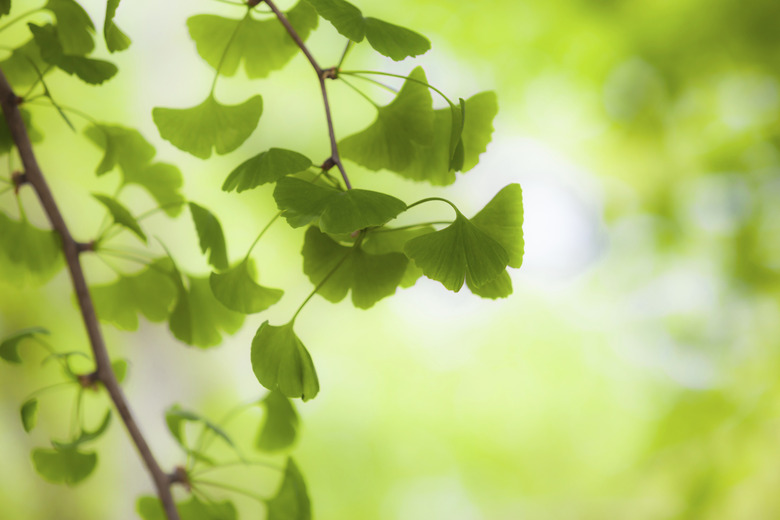Why Is Photosynthesis Important To Humans?
Photosynthesis is the conversion of light energy (solar energy) into chemical energy. It is the primary process for life on Earth. With the exception of hydrothermal vent communities found deep on the ocean floor, all living things on the planet rely on photosynthesis to provide their energy. This energy can be consumed directly (think of plants, algae and some bacteria) or indirectly (by consuming organisms which have performed photosynthesis). Whether a lion eats a zebra, fungus grows on rotting wood, or a cat eats a bird that ate a spider that ate a fly, all of the energy originally came from the sun and through photosynthesis.
Humans are reliant on photosynthesis to produce the food that we eat, as a source of energy to create heat, light and electricity and for many of the materials that we make and use in our everyday lives.
How Photosynthesis Works
How Photosynthesis Works
All living organisms that photosynthesize contain chlorophyll. Chlorophyll is an enzyme that allows water (H2O) and carbon dioxide (CO2) to be recombined into sugars (C6H12O6) and oxygen (O2). These sugars are then used to fuel cellular processes and allow for the growth and reproduction of an organism.
How Do Plants Affect Humans
How Do Plants Affect Humans
The importance of photosynthesis to man cannot be understated. Humans would not exist without photosynthesis and we continue to rely upon it for survival. All civilizations in human history were created using energy sourced from photosynthesis.
When the process of photosynthesis is seriously impeded – either from extensive deforestation, drought or crop disease – this can lead to famine and societal collapse. These issues have been associated with the fall of empires and civilizations, including the Mayans in Central America, the Khmer in Southeast Asia and the Akkadians in the Middle East. The Irish potato famine is another famous example of the societal effects of reduced photosynthetic production.
Food Production
Food Production
So why is photosynthesis important to life on Earth? Humans are totally reliant on photosynthesis for the production of food, and we depend on photosynthesis to produce almost all the food products we consume. The fruits and vegetables in our diets directly depend on the photosynthesis process for life, and the animals we consume (in the form of meat, eggs, milk, and so on) depend on plants for their survival.
Energy Production
Energy Production
Although their use causes serious environmental issues, modern society would not exist without the extensive utilization of fossil fuels such as petroleum, coal and natural gas. These fuels are comprised of the fossilized remains of plants and bacteria which have accumulated over millions of years. The combustion of these fuels allows humans to access the energy stored during this process and to develop technological advances such as electricity, steam power and the refining of raw materials.
Plants can also be used directly to provide energy in the form of light and heat through the burning of firewood and other materials. This energy has been used throughout human history for cooking, heating and light, and the use of fire for hunting is a key element in the evolutionary history of humans.
Material Production
Material Production
Photosynthesis is the original source for many of the raw materials and energy used in construction, development and everyday products. Common examples include the timber used in construction, craftmanship and paper-based products. Less obvious are materials such as plastics, which come from refined fossil fuels, and plant-derived products like varnishes, latex and cosmetics.
Additionally, all refined materials, including cement, metals and plastics, require the input of energy. When this energy comes from fossil fuels or biomass, photosynthesis is ultimately responsible for the production of that fuel.
Oxygen Production
Oxygen Production
The waste product of photosynthesis is oxygen, which all aerobic creatures (including humans) rely on for survival. While tropical forests are viewed as 'the lungs of the planet,' the majority of oxygen is produced by blue-green algae (cyanobacteria) in the world's oceans.
Oxygen did not originally exist in the Earth's atmosphere, and was at one point actually toxic to life. Over millions of years, cyanobacteria created so much oxygen that the composition of the atmosphere began to change, which then led to the development of complex, multicellular life that could tolerate oxygen within their systems. If photosynthesis were to cease, the atmosphere would lose oxygen and it would become impossible for humans and other life to survive.
Other Benefits of Photosynthesis
Other Benefits of Photosynthesis
Plants and vegetation communities also offer additional services while undertaking photosynthesis that are less obvious to the casual observer. Plants and vegetation use large amounts of water while photosynthesizing, which helps to clean contaminants from the soil and also reduces the incidence of flooding.
Sugars produced during photosynthesis also travel to the roots, where they are then exuded into the soil. These sugars help fuel bacteria and fungi in the soil, which create a diverse soil ecosystem that offers many benefits to soil health.
Cite This Article
MLA
Michelle, Meg. "Why Is Photosynthesis Important To Humans?" sciencing.com, https://www.sciencing.com/why-is-photosynthesis-important-to-humans-12000249/. 30 September 2021.
APA
Michelle, Meg. (2021, September 30). Why Is Photosynthesis Important To Humans?. sciencing.com. Retrieved from https://www.sciencing.com/why-is-photosynthesis-important-to-humans-12000249/
Chicago
Michelle, Meg. Why Is Photosynthesis Important To Humans? last modified March 24, 2022. https://www.sciencing.com/why-is-photosynthesis-important-to-humans-12000249/
